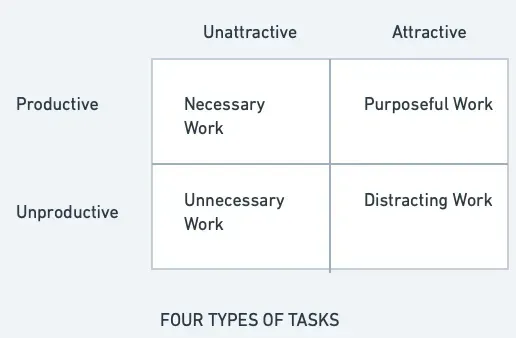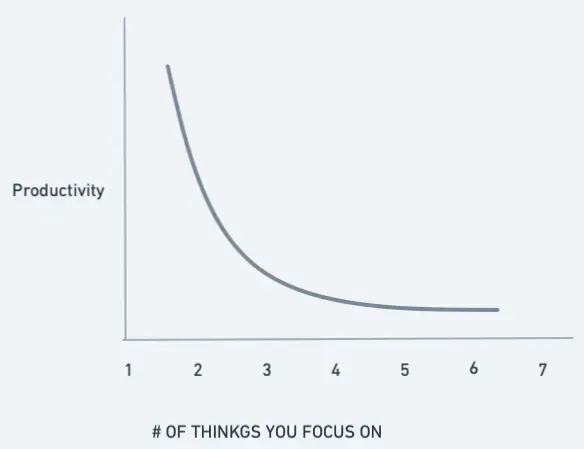
The Art of Focused Work: Essential Takeaways from ‘Hyperfocus’
Let’s talk about something we all face every day: distractions. It is all around us. You know that moment when you check your phone for one thing, and suddenly you’re deep in Instagram, Twitter, or YouTube? Yeah, we’ve all been there. You start with “just one notification” and end up spending 30 minutes checking everything else. By the time you realize how much time you’ve wasted, it’s too late. And then comes that familiar thought: “I’ll do my important work later when I can focus better.” This repeats every time.
As software developers, we deal with this all the time. Our phones buzz with messages, our email keeps pinging, and our colleagues keep asking questions. It’s like having multiple browser tabs open in your brain! I used to struggle with this too. I’d try to work on multiple tasks at once, thinking I was being productive. Instead, I’d end up making mistakes or forgetting important details.
This pattern isn’t just about social media. Our environment constantly bombards us with influences that shape our actions in subtle yet powerful ways. As Chris Bailey points out in ‘Hyperfocus’, these influences can be as simple as a friend’s book recommendation echoing through a podcast you hear in a taxi, or as pervasive as the carefully crafted advertisements that seem impossible to ignore.
As a technology professional, I’ve witnessed firsthand how this culture of constant distraction affects our work. Developers, including myself, often juggle multiple tasks simultaneously, only to find ourselves tangled in a web of incomplete work and missed details. Over time, this state of perpetual distraction begins to feel normal, making it increasingly difficult to break free.
However, through studying and implementing the principles from ‘Hyperfocus’, I’ve discovered practical strategies that have transformed my daily routine. This isn’t just another productivity guide — it’s a collection of battle-tested practices that have helped me shift from chaos to clarity in my professional life.
Your Brain’s RAM: Understanding How Focus Works
Let me explain something cool about how your brain works with focus. You know how your computer has RAM that helps it handle different programs? Your brain works in a pretty similar way!
Think about what happens when you open too many heavy applications on your computer. It starts getting slower, right? Maybe Visual Studio, Chrome with 20 tabs, Slack, and a few other apps — and suddenly everything becomes sluggish. That’s because your computer’s RAM is getting full.
Your brain has something like that too — we call it “attentional space.” It’s like your mental RAM. But here’s the awesome part: unlike your computer’s RAM, which you can’t magically expand (unless you buy more), your brain’s “RAM” can actually grow and get better at handling tasks!
Here’s how it works in real life:
- When you’re doing simple stuff together (like listening to music while coding), it’s usually fine because one of these things is easy and automatic.
- But when you try to do two heavy tasks (like learning a new framework while being in a team meeting), your brain struggles — just like a computer would if you tried to run too many heavy programs.
The cool thing is, once you understand this, you can be smarter about how you use your brain’s “RAM”:
- Some tasks can run together nicely (like listening to lo-fi while coding)
- Other tasks need your full brain power (like solving a tricky bug)
- The trick is knowing which is which!
As the book explains very clearly, we face four types of tasks every day.

Try categorizing each of your tasks using this chart. If a task falls into the “necessary and purposeful work” category, it needs your full attention. Try to eliminate or avoid unnecessary and distracting work. I know this is difficult, but with regular practice, it becomes a habit to assess your tasks and determine how much focus they require.
Chapter 0.5 of “Hyperfocus” offers advice on focusing while reading, but I believe these tips can be applied to most daily tasks:
- Keep your phone and other unnecessary electronic devices away from you if you don’t need them for the current task.
- A quiet and peaceful environment is ideal.
- Use paper and pen for note-taking, rather than other devices.
- If you find yourself unable to focus, take a short break instead of forcing yourself to continue.
It’s important to track how often your mind gets distracted during important tasks. You might remember another issue you’re facing, or you might think of replying to a friend’s message. If you open WhatsApp to reply, you might then get drawn into other social media apps. These distractions can snowball.
By recognizing what actions or thoughts are distracting you, you can train your mind to stay on track. This is a mental battle, as distractions are often powerful, and it takes willpower to resist them.
Distractions and Actions
Sometimes, you can’t completely eliminate distractions, especially depending on your surroundings. For example, in an office, there might be people discussing work or engaging in conversations that pique your interest. If eliminating the distraction isn’t an option, you need to manage it and quickly return to your focused work.

Refer to this image from “Hyperfocus.” Try categorizing your distractions using this table. This will help you decide which distractions to avoid and which ones you can acknowledge and then return to your work.
If email notifications are a problem, adjust your email settings to only show important or priority messages. If social media is a major distraction, try removing social media apps during weekdays and only installing them on weekends, or use website/app blockers during work hours.
It’s crucial to understand how many of your tasks require your full, uninterrupted attention.
Chris Bailey explores many other aspects of taming distractions in Chapter 4 of “Hyperfocus.”
The Cost of Task Juggling and a Solution
Constantly switching between tasks forces your attentional space to reload with the data for each new task. This is time-consuming and drains your energy. You end up in a messy situation, feeling overwhelmed and experiencing negative emotions because you can’t complete tasks efficiently.
To avoid this, I’ve developed a routine that has significantly improved my productivity. I explain it in detail in this blog post: Taming the Work Chaos: A Simple Guide to Daily Productivity.
Instead of trying to keep track of everything in my head, I use a note-taking tool to prioritize tasks. This helps me identify what to focus on first and what can be postponed. As a result, I rarely miss important deadlines or feel unnecessarily rushed. This method has been working well for me for the past three years, allowing me to complete critical tasks on or before their due dates.
Focusing on one task at a time increases your productivity. To achieve productive outcomes, you need to reduce parallel tasking as shown in the below image:

Break Strategies
Regular breaks are essential for maintaining focus and productivity. One key reason is that intense focus, or “hyperfocus,” can drain your energy, leaving you less effective for subsequent tasks. Breaks also help prevent health problems, especially if your work involves prolonged computer use or limited physical activity.
My personal strategy is to take short relaxation breaks of a few minutes after every hour of focused work. After completing a particularly demanding task, I take a slightly longer break of 10–15 minutes. These breaks allow my mind to disconnect from work and recharge for the next task. It’s important to choose break activities that don’t require intense focus themselves. Ideally, these breaks should also incorporate some physical activity, even if it’s just a short walk or some stretching.
Enhancing Attentional Capacity
You can expand your attentional space through two primary methods: meditation and sleep.
Meditation
Meditation improves memory capacity, allowing you to retain more information at once. This, in turn, boosts your productivity. Start with short meditation sessions and gradually increase the duration over time. You’ll begin to see positive changes in your ability to focus. This is discussed further in Chapter 5, “Making Hyperfocus a Habit,” of “Hyperfocus.”
Sleep
Adequate sleep, around 7–8 hours per night, is crucial. Sufficient sleep provides benefits similar to taking regular breaks throughout the day, allowing your mind to rest and recharge.
The Importance of Balance
Insufficient sleep and lack of physical activity can lead to a range of health issues, including a weakened immune system, obesity, heart problems, and mental health challenges like anxiety and depression.
In my previous company work experience, the company encouraged excessive work hours for higher compensation. Their logic was that after work, you simply pass time at home, so why not work more and earn more? However, this often comes at the cost of your health.
Remember, if your performance declines due to health problems, companies may find someone else to replace you. It’s important to avoid such work cultures and prioritise your well-being.
Recommended Reading
Hyperfocus — Chris Bailey on Amazon.
Conclusion
Mastering hyperfocus is a journey. By understanding how your attentional space works, learning to manage distractions, and building better focus habits, you can significantly improve your productivity and overall well-being.
Remember that there’s no one-size-fits-all solution. Experiment with the strategies discussed in this post, adapt them to your specific needs, and be patient with yourself as you develop these skills. The ability to truly focus is a superpower in today’s distracted world, and the effort you invest in cultivating it will pay off handsomely.